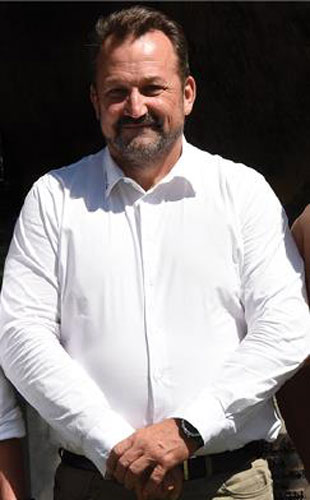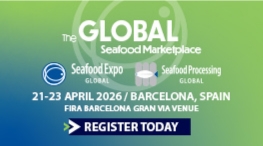This article was featured in Eurofish Magazine 5 2025.
The University of Debrecen’s faculty of agricultural and food sciences and environmental management includes the laboratory of fish biology and aquaculture that links classroom teaching to applied research in recirculating systems, aquaponics, hatchery practice, and extension work with anglers and pond managers.
The faculty sits on the Böszörményi út campus and delivers a broad slate of agricultural degrees in English, including agricultural engineering at BSc level and animal husbandry, crop production, and food-related MSc programmes. Aquaculture is taught not as a standalone undergraduate degree but as a specialisation in a structure that gives future fish farmers and resource managers a grounding in biology, technology, and farm systems, before they choose a fisheries pathway. Run by two associate professors, Milán Fehér and Péter Bársony, the laboratory of fish biology and aquaculture describes itself as a modern teaching and research base serving regional freshwater needs and operating at national and international levels through research, training, and consultancy.
Close collaboration with fish farmers and anglers
In Debrecen’s model, aquaculture is embedded in the five-year undivided agricultural engineering programme and related BSc and MSc pathways, rather than split off as a separate undergraduate degree. Students interested in fisheries select a block of aquaculture and fisheries subjects; those who want deeper technical training later can return for a three-semester, postgraduate specialisation in aquaculture and fisheries. The approach reflects Hungary’s labour market: demand for new pond and intensive-system managers fluctuates, and courses typically run when cohorts reach a viable size. Recognising Hungary’s distinctive governance of inland waters, e.g. state ownership of aquatic resources and leased fishing rights, the faculty has also co-designed a master’s-level programme for angling managers with sector partners. It targets those who run angling societies and manage reservoirs, lakes, and river stretches but lack a rounded mix of ecology, technology, finance, and legal knowledge. The first cohort graduated recently, and the faculty envisages repeat intakes to professionalise stewardship across an estate of roughly 150,000 hectares managed through more than 2,000 angling clubs. The faculty has also introduced an “animal health engineer” BSc intended to bolster farm-level health capacity across species, including fish. Graduates would not replace veterinarians but would extend veterinary guidance through prevention, monitoring, and day-to-day health management in farms and aquaculture units.

Duckweed growing in an aquaponics system.
Researchers are studying whether it could replace fishmeal in fish feed.
The laboratory houses recirculating aquaculture systems (RAS) at several scales – 300 litres, 1,000 litres, and around 10 cubic metres – alongside two greenhouse halls dedicated to aquaponics and a containerised hatchery unit. The lab was established in 2015 and later upgraded through a major grant, with production and research areas clearly separated from filtration “hearts” built around drum filters, UV, and biofilters. The lab teaches students, runs experiments, and produces fry and fingerlings for farms under contract. Because space and water are limited, it focuses on early life stages rather than market fish. It also keeps costs down by manufacturing small batches of experimental pellets in-house, vital when commercial suppliers will not mill bespoke 10–20 kg lots. On the aquaponics side, the team uses filtered RAS effluent to feed raft beds and ebb-and-flow troughs. Duckweed is cultivated as both a water-cleaning plant and a protein ingredient in feeds for the fish. Winter experiments often shift to watercress, which tolerates low temperatures and short days, keeping research moving through the off-season. Some of the herbs and vegetables produced in the aquaponics trials feed into the faculty’s nearby food unit; basil for pesto is a favourite example.
Studies focus on fish feeds, health, and product quality
Much of the research focuses on feed formulation, digestion, and the fish microbiome. One strand replaces a portion of fishmeal with duckweed, tested at inclusion rates such as 7.5, 15, and 30 percent in isonitrogenous, isoenergetic diets dried at low temperatures to protect amino acids and vitamins. Another strand evaluates black soldier fly meal as a protein source for African catfish. At around 30 percent replacement, growth held steady against control diets; full fishmeal replacement is technically possible with amino-acid supplementation, but at present is uneconomic given input prices. Alongside growth, the team tracks fillet quality, fatty acids, off-flavour, and chitin effects, and it has studied microbial risks that insect substrates could introduce into closed systems. The lab targets two species for sale to farmers: common carp and African catfish. It carries out artificial propagation and rears fry and fingerlings to order, typically selling African catfish at 3–5 g after about four weeks. Warm groundwater resources make catfish farming attractive, and Hungary has become a leading EU producer of African catfish by pairing thermal water with intensive systems. The lab prioritises spring and summer batches. Common carp work clusters in April–May; African catfish fills the warmer months. Across a production run, a single system can raise on the order of tens of thousands of African catfish juveniles per batch, with automatic feeders controlling ration frequency and incremental increases to match growth.

Dr Milán Fehér is responsible for the laboratory of fish biology and aquaculture
where students and researchers are working on multiple experiments.
A short drive from campus, the faculty collaborates with the local angling association at a 60-hectare reservoir shaped like a pair of trousers where the depth in the two legs is 2-3 m versus 5-6 m in the deeper parts of the pond. The water comes via the Keleti irrigation channel from the Tisza. Here Dr Bársony operates floating cages as a semi-intensive nursery, rearing species that are hard to source in the right sizes for stocking, then releasing them directly to the water at the season’s end. Trials have included European perch (Perca fluviatilis), tench (Tinca tinca), pike-perch (Sander lucioperca), and common carp, with feed delivered by automatic feeders and oxygen managed by pumping through the cages and adding aeration as needed. In one study, European perch was introducedat 50–60 g in May and reached around 150 g by October. The point is not only growth. By rearing fish in the very water into which they will be stocked, the programme improves acclimatisation to local temperature regimes, oxygen dynamics, and plankton communities, boosting post-release survival. The cages also serve as “recovery wards”: large, catch-and-release carp accumulate mouth injuries under intense angling pressure and can be held and rehabilitated before returning to the fishery, protecting the trophy fish that underpin the venue’s appeal.
A unit that punches above its weight
The aquaculture unit is small by design but the training footprint is wide. Undergraduate, master’s, and doctoral students use the facility for theses and internships that mix research with production tasks: induced spawning, sorting, diet formulation, system maintenance, and data collection. The lab hosts four to five PhD candidates at any time, and each year several BSc/MSc theses are completed on site. Because Hungary’s aquaculture sector is intimate—“everybody knows everybody,” as Dr Fehér puts it—placement is often relational. Farmers call the lab when they need people; the lab vouches for students whose practical skills and attitude fit a role. Over the past decade, a steady stream of graduates has moved into intensive systems, hatcheries, and pond farms. For international students, the faculty’s English-language degrees and Debrecen’s campus infrastructure make the lab a convenient internship base within walking distance of dorms.

Dr Péter Bársony runs trials in cages placed in a lake that should benefit demand from anglers
for valuable fish species such as European perch and common carp.
The University of Debrecen’s aquaculture profile is not about scale. It is about fit: aligning teaching to the labour market; building research platforms that double as production units; designing RAS and aquaponics systems that are simple to run; and targeting research questions at the material problems of fish farming and fisheries management. This approach results in graduates who can run a hatchery experiment in the morning, adjust a biofilter in the afternoon, and brief an angling-club board in the evening. They can carry out feed trials that weigh protein prices and palatability alongside growth rates and fish welfare. And they contribute to securing the future of the Hungarian aquaculture sector at a time when interest in pond fish farming among young people in many European countries is dwindling.









